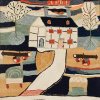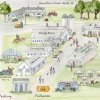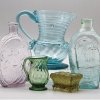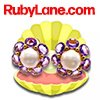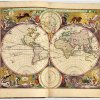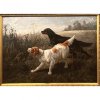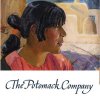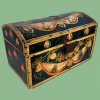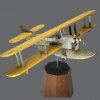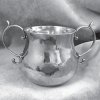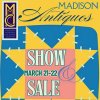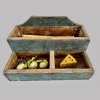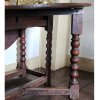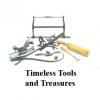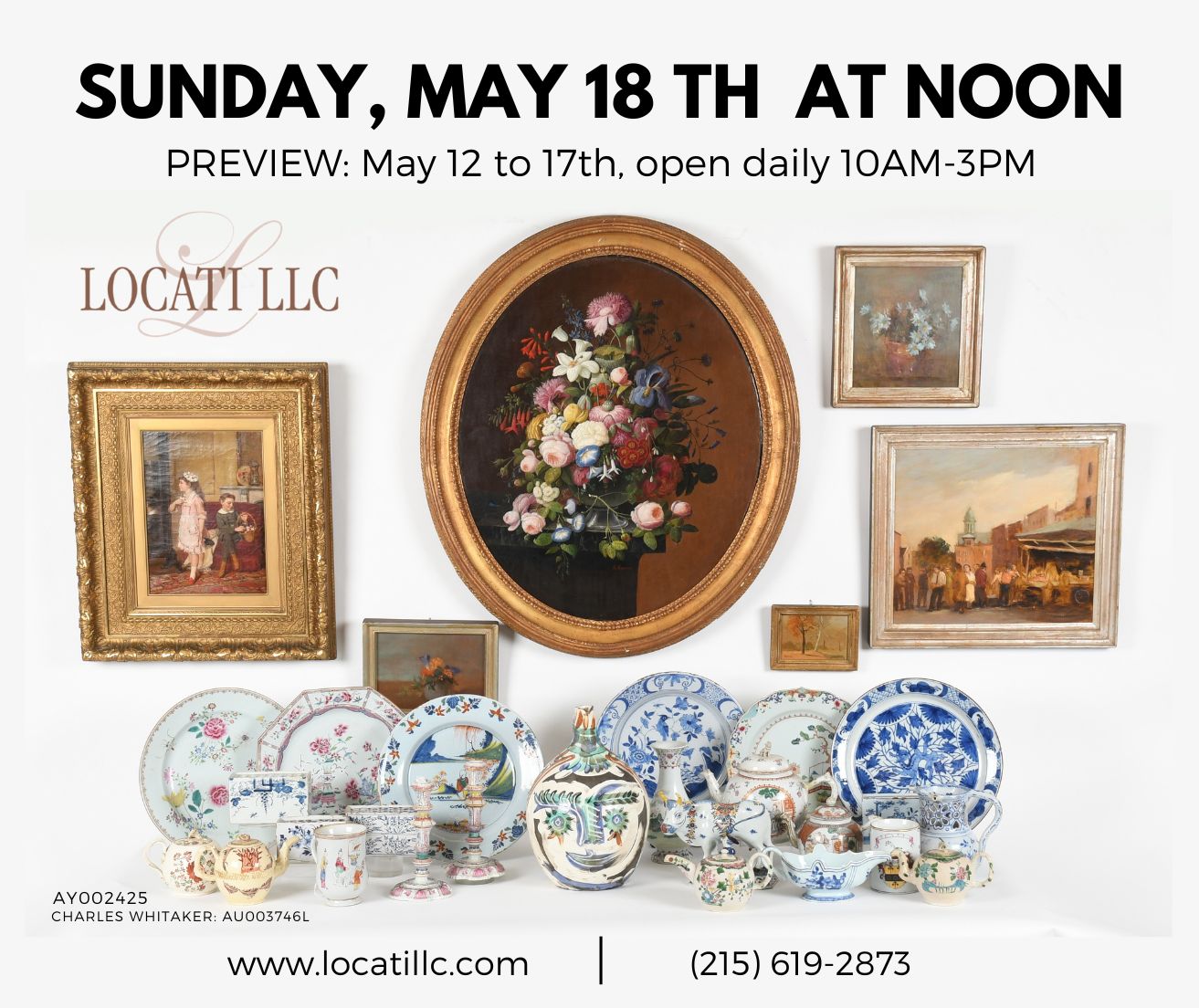Pennsylvania Sale Excels in the Heartland
October 26th, 2019
Horst Auction Center, Ephrata, Pennsylvania
Photos courtesy Horst Auction Center
Horst Auction Center held a 798-lot sale on October 25 and 26, 2019, at its facility in Ephrata, Pennsylvania, titled “Folk Art from an Old Time Ohio Collection.” The total gross was $298,435. Horst does not charge a buyer’s premium for in-house bidding. Online bidders pay a 10% buyer’s premium.
For those in the know about Pennsylvania antiques, it was no secret; the sale was on behalf of collector Ross Trump (no relation to the president).  Ross Trump (age 99) of Medina, Ohio, is a dealer and very private individual. Medina is a bedroom community of both Akron and Cleveland. It didn’t come as a surprise that Trump would choose not to have his name plastered on the front of a catalog. Old tags on many of the items had his name on them.
Ross Trump (age 99) of Medina, Ohio, is a dealer and very private individual. Medina is a bedroom community of both Akron and Cleveland. It didn’t come as a surprise that Trump would choose not to have his name plastered on the front of a catalog. Old tags on many of the items had his name on them.
Not overly active in the marketplace for about two decades, Trump did the bulk of his collecting in the 1950s. Yes, roughly 70 years ago. This was indeed an old-time collection. And what was sold is just a portion of the collections; however, it was a very nice cross section of material. Trump had sent his pottery to Crocker Farm, which mostly sold his redware over the last few years, primarily in 2013.
Trump and partner Ed Brown (Edson James Brown, age 93) did a lot of buying from dealer Hattie Brunner. Brown was a collector as well, yet not on the scale as Trump. The two were also close to August Knapp (1924-2019).
Hattie Klapp Brunner (1889-1982) of Reinholds, Pennsylvania, was among the best-known antiques dealers in the country from the 1920s to the ’70s. A retrospective exhibition of her life as a dealer was held at the Historical Society of the Cocalico Valley in Ephrata in 2010. Thanks to Raymond Brunner and the work of Clarence Spohn, her receipt books, correspondence, bills, etc. are available to researchers. Trump began buying from her in 1948 and was a regular throughout the ’50s and ’60s, buying several hundred items. The last receipt for him was in 1973. Her shop/house was called The Tulip Shop. Traveling to Reinholds, which today remains a remote and isolated enclave in northern Lancaster County, was no small venture in those days, and it likely involved Route 30 the bulk of the way from Medina to Lancaster County—the Pennsylvania Turnpike wasn’t completed until 1956.
Using Brunner’s code system of translating the alphabetical phrase of “Mary I Love U” to numeric, one can decipher her costs. A receipt for Trump in 1961 shows a “Lehn bucket” for $10. She sold the bucket at her cost.
A 49" x 49" wool fabric piecework embroidered wall hanging on dark blue background depicting tulips and birds along the border and with creation scenes, including Adam and Eve, in panels in the center also came through Brunner’s shop. The wall hanging was once owned by author Dr. Cornelius Weygandt (1871-1957). With wear and losses, it attracted plenty of attention at the preview and a debate regarding its date and place of origin. It is German and from the 19th century, according to dealer Kelly Kinzle, who bought the piece for $9800 on behalf of a collector.

Measuring 49" x 49", this piecework wall hanging with central panels depicting creation scenes and Adam and Eve sold for $9800 to dealer Kelly Kinzle of New Oxford, Pennsylvania, on behalf of a collector. Kinzle said he thought the piece was of 19th-century German origin when contacted following the sale.
The sale (well over 1000 objects) did well as a whole. It was marketed and presented well by the auction company. Online bidding aided the sale greatly. It was a busy weekend in the region. A popular country antiques show in Elverson was taking place, and the Zipps of Crocker Farm, Sparks, Maryland, were holding a sale.
The timing of a sale and the state of the current marketplace are often more of a factor than the actual auction house conducting the sale. It was interesting to have the things sold near where many of them were made. For example, Joseph Lehn (1798-1892) lived near Hammer Creek Mennonite Church near Clay, in northern Lancaster County, just down the road from Ephrata.
A fair amount of Lehn’s work has been coming out. A fine yellow cup and saucer sold for $4000 to the trade. A comparable example sold for $8000 at a catalog sale roughly a month earlier at Horst.
A sugar bucket by Lehn in good condition brought $3100 from the trade. A fine miniature paint-decorated chest by Lehn also sold to the trade; it brought $4200. A comparable example sold for $3567 to a Pennsylvania collector at Skinner on November 3 (from the Tom and Carolyn Porter collection). An unusual small bucket by Lehn with a bail handle and three bands went to an online bidder and realized $2300, and a fine wooden turned and paint-decorated salt (a wider form than egg cups) by Lehn went for $1000 to the trade.

This 19th-century wooden paint-decorated sugar bucket by Joseph Lehn sold for $3100 to the trade. Pass photo.
It was certainly a different era for Trump and Brown’s generation, and they were a different breed of collector. We rarely see today’s collector amass objects like this. Supply and demand were higher a half century ago, honest wear was more acceptable, and leaving things alone was the norm. More often than not, the collector’s mindset today is different. “Where will it go?” was a saying not in the vocabulary of die-hard collectors in their day. Minimalists they were not.
Trump loved Pennsylvania material, much of it Pennsylvania German or made for the Pennsylvania German market, such as spatterware, textiles, red tole, butter prints, folk carvings, chalkware, glassware, tin cookie cutters, baskets, wallpaper boxes, candy containers, wrought-iron utensils, fraktur, and more.
Of the things that fell short, a 6¼" tall Schimmel eaglet that sold for $1300 fell through the proverbial crack. A small chunk of the base was missing, and it had minor wear and roughness, but by no means was it in poor condition. Many people active in today’s market have been told that antiques need to be pristine. The lot after the eaglet was a millinery shop papier-mâché mannequin head with a bonnet, which did better at $1600.
Much of the spatter china found receptive bidders, showing an overall healthy current market. A 5" diameter yellow thistle pattern dish in good condition with mild discoloration went for $1450, a yellow thistle pattern child’s cup and saucer in good condition sold for $2100, and a blue sailboat pattern creamer with a restored spout rim sold for $3500. A rare four-color rainbow cup and saucer sold for $9200. The cup had a flake on the foot, likely from kiln removal. A blue cannon pattern cup and saucer with a flake and spider line sold for $2550. It is a rare pattern.

This bright and vivid circa 1835 four-color spatter cup and saucer went for $9200.
A Sugarcreek, Ohio, paint-decorated lift-top chest by Valentine Yoder brought a strong $5200. Many of the early wooden carved butter prints also did well. A round butter print with a carved log cabin and barrel, cataloged as a rare President William Henry Harrison campaign-inspired butter print, for sold for $3190 to an online bidder, underbid by a dealer in the room. The log cabin and cider symbols were seen as grassroots emblems. A round butter print with two carved beehives sold for $2050, as did an oval butter print with tulips and hearts.
Any future sale dates have not been set as of press time, but Brent Horst stated that the consignor was pleased with the results, so we will see.
For more information, call Horst Auction Center at (717) 738-3080 or visit the website (www.horstauction.com).

The small blue-ground Compass Artist box, 4½" x 4" x 3", went to the trade for $8000.

This large circa 1810 full-sheet colorful fraktur taufschein with two parrots flanking a central heart and lower peacocks sold for $6000.

The small paint-decorated wooden slide-lid box, 5¾" x 3" x 2½", with a harbor scene on the lid, a house in a pasture on one side, and a harbor scene on the other side sold for $2500. The box dates from the first half of the 19th century.

This early and rare fraktur, circa 1789, attributed to the Hanovertown Artist sold for $5300 to collector/dealer Vernon Gunnion of Lancaster, Pennsylvania.

This small folk art carved and painted wooden horse, circa 1890, realized $675. Pass photo.

A collector paid $2250 for this dome-lid tapered straight-sided wrigglework decorated tin coffeepot with a straight tapered spout and strap handle. A note inside the coffeepot said that it had brought $1025 at a Pennypacker’s sale in 1966.

This framed 5¼" x 8¼" watercolor drawing depicting a ram and birds in a tree, attributed to the Schwenkfelder community and inscribed “1861,” sold for $1700.

This large tin cookie cutter depicting a rider on horseback sold to an online buyer for $660. Pass photo.

This folk art cuckoo-type wall clock by Adelard Courville of East Brookfield, Massachusetts, sold for $1200. Pass photo.

This square carved wooden butter print sold to a collector for $1450. Pass photo.

This circa 1930 large life-size solid-pour form cast chalk cat went for $270. There were many cat-motif items in many mediums in the sale. Pass photo.


This early blue twill fabric man’s vest with a checkered design front and with tintype buttons sold for $450. Pass photo.

A fine Mennonite pieced ball-shaped hanging pincushion/rattle, circa 1860, realized $775.

This unusual small bucket, 7" high x 9¼" diameter, by Joseph Lehn sold for $2300. Pass photo.

This outstanding circa 1847 crewelwork stitch decorated hand towel, 64" x 18¾", sold for $875.

This small plank-seat child’s salmon-ground paint-decorated chair, circa 1860, sold for $2000.
Originally published in the January 2020 issue of Maine Antique Digest. © 2020 Maine Antique Digest




